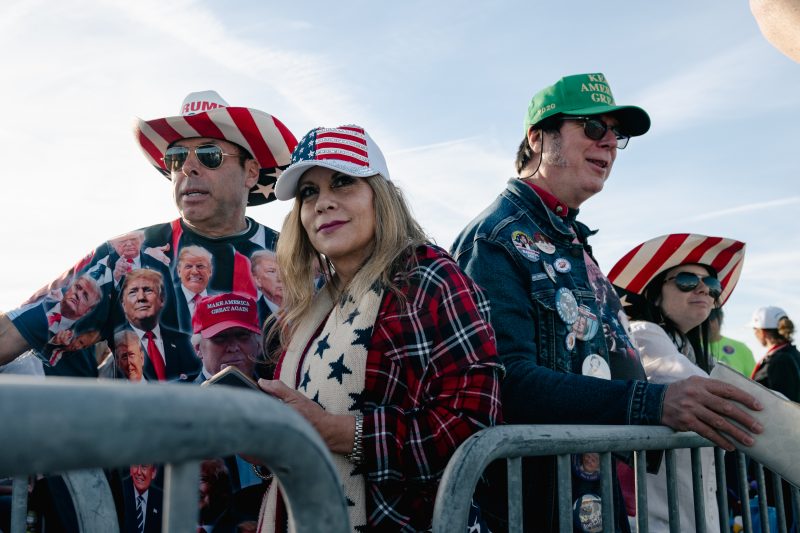It will probably take people at the White House a little bit to work their way through Pew Research Center’s new analysis of Americans’ concerns about the country. After all, the poll includes one of the worst measures of President Biden’s approval on record — only 35 percent — and that’s the sort of thing that will sting for a moment.
(Pew, being a professional research organization, notes that this is not significantly different from the 37 percent Biden received in March, but it’s a fair bet that the White House wouldn’t find that particularly soothing.)
Once that particular figure is digested, however, it would behoove the administration to dig into the rest of the findings. Not only as a measure of where it might most effectively make its pitch to prospective voters, but also as a reminder of the urgent need for Democrats to engage young voters.
The research centers on Pew’s effort to determine which issues are considered the most significant problems in the country. Respondents were given a slate of options and asked to indicate whether each was a very big problem facing the United States. The two that were viewed as a very big problem by the largest percentage of Americans (nearly two-thirds) were unsurprising: inflation and the cost of health care.
But there was a wide partisan divide even on those. Just over three-quarters of Republicans said inflation was a very big problem, compared with just over half of Democrats. But just under three-quarters of Democrats identified health-care costs, compared with just over half of Republicans.
(Pew’s analysis grouped together members of each party and independents who tend to vote with that party, a distinction that will be important later in this article. To simplify the discussion, though, I’ll generally just refer to the partisan groups by the party name.)
The widest gaps between the two parties were similarly unsurprising. Democrats were 50 points more likely to identify climate change as a very big problem. Republicans were 45 points more likely to identify illegal immigration.
If we compare the parties’ views of each issue against one another, you can see that there’s generally little agreement. On average, the parties were 22 percentage points apart on their evaluations of each issue. On the chart below, issues farther from the diagonal line are ones on which there was more disagreement. Ironically, one of the issues on which there was the most similarity was that the parties were unable to work together.
There’s also an interesting contrast that was noted by Pew’s John Gramlich. Democrats are much more likely to say gun violence is a very big problem, while Republicans are more likely to say violent crime is.
Interestingly, older Americans are more likely to view issues as problems than are younger ones. Respondents aged 18 to 29 were more likely to identify only four issues as very big problems: affordability of health care, climate change, unemployment and (to a lesser extent) the quality of public schools. Interestingly, despite the activism on gun violence by younger Americans, it was more likely to be identified as a very big problem by older Americans.
The biggest gap was on illegal immigration, where older Americans were more than 40 points more likely to identify it as a very big problem for the country.
You see where I’m going with this. Climate change was one of the outliers for Democrats and for young people; illegal immigration for Republicans and older ones. The average difference between younger and older Americans on these issues was 17 points, a bit under the 22-point gap between the parties. But the gap between Democrats and younger Americans averaged only nine points.
If you’re used to seeing scatter plot graphs like the one below, you’ll know that clusters of dots that generally align are usually ones in which there’s a correlation at play. And, sure enough, the responses of Democrats and the responses of adults under 30 correlate well.
The biggest gap between the two groups was on gun violence.
We could do something similar in comparing Republicans and older Americans; the average gap between the views of those groups was about 11 points and the correlation equal to the Democrats-younger Americans comparison. Partisanship and age overlap. This is not a new observation, of course — just a new demonstration of it.
This year, we used voter registration data to evaluate the age distributions of the parties. About two-thirds of Republicans were ages 50 or older and a third ages 65 and up.
This is where Pew’s inclusion of independents who lean toward a party comes into play, though. Independents and members of third parties skew much younger — and are more likely to end up supporting Democratic candidates than Republicans.
The challenge for Democrats is, as always, getting those younger people to vote. That’s the reminder here for the White House: If Biden finds himself running against a similarly unpopular Republican next year (cough, Trump, cough), he can still squeak into reelection if his base of support is engaged. After all, the biggest gap between population and turnout occurs among younger voters.
There’s one other bit of good news they might consider: Young people appear to be more optimistic than older ones.

